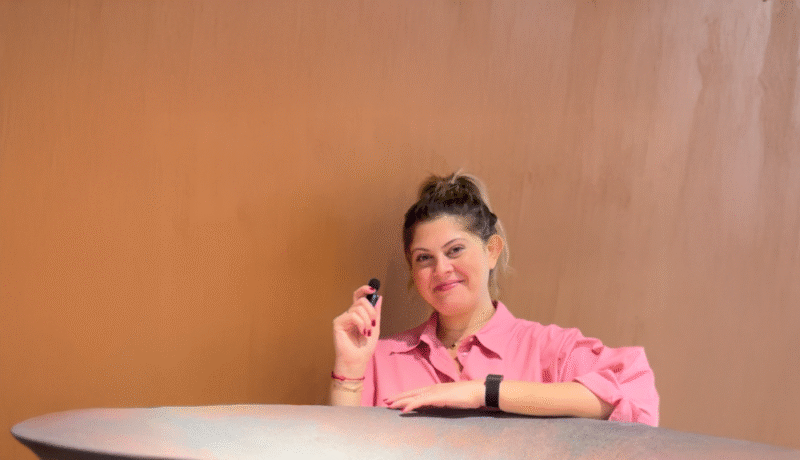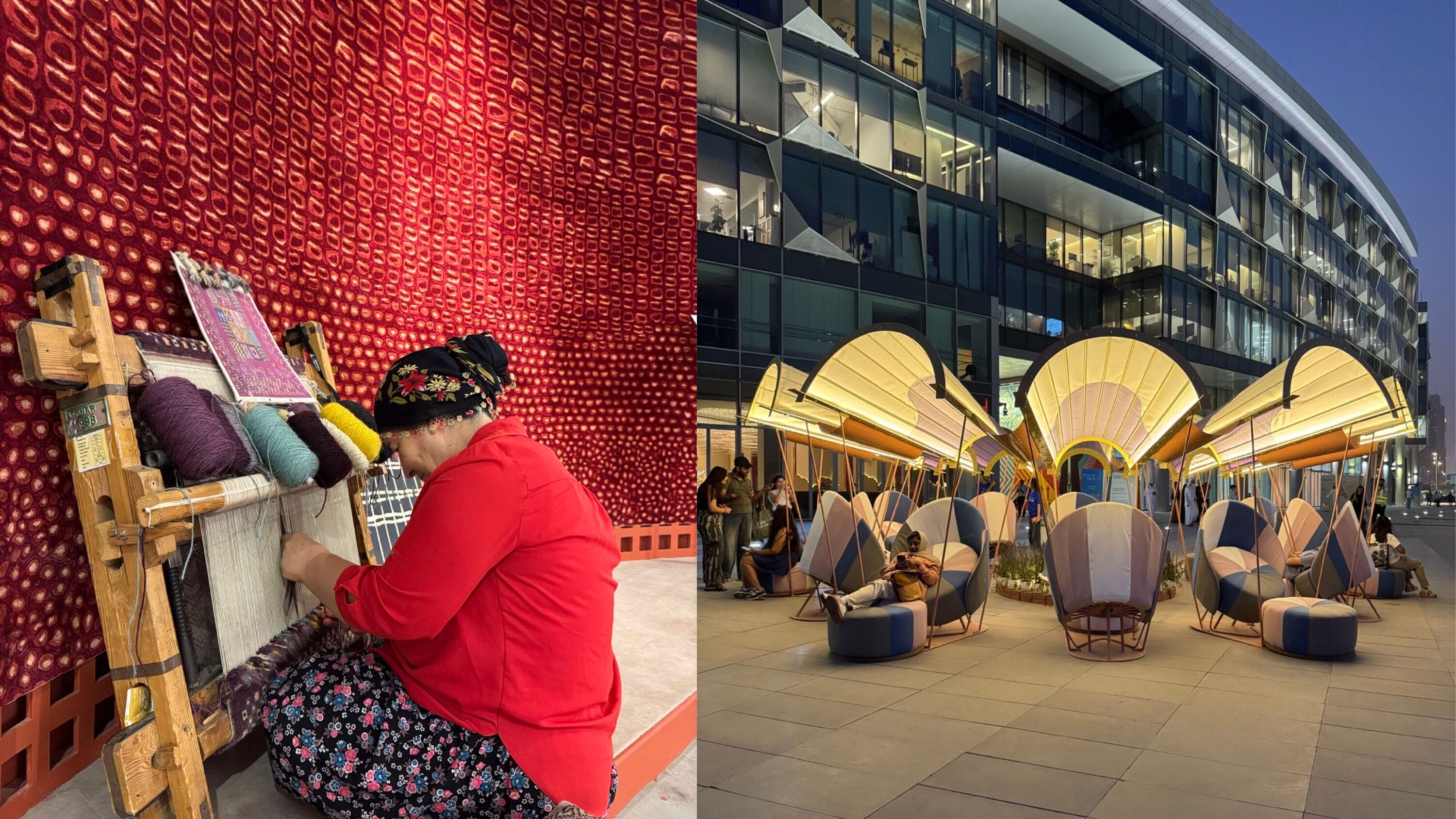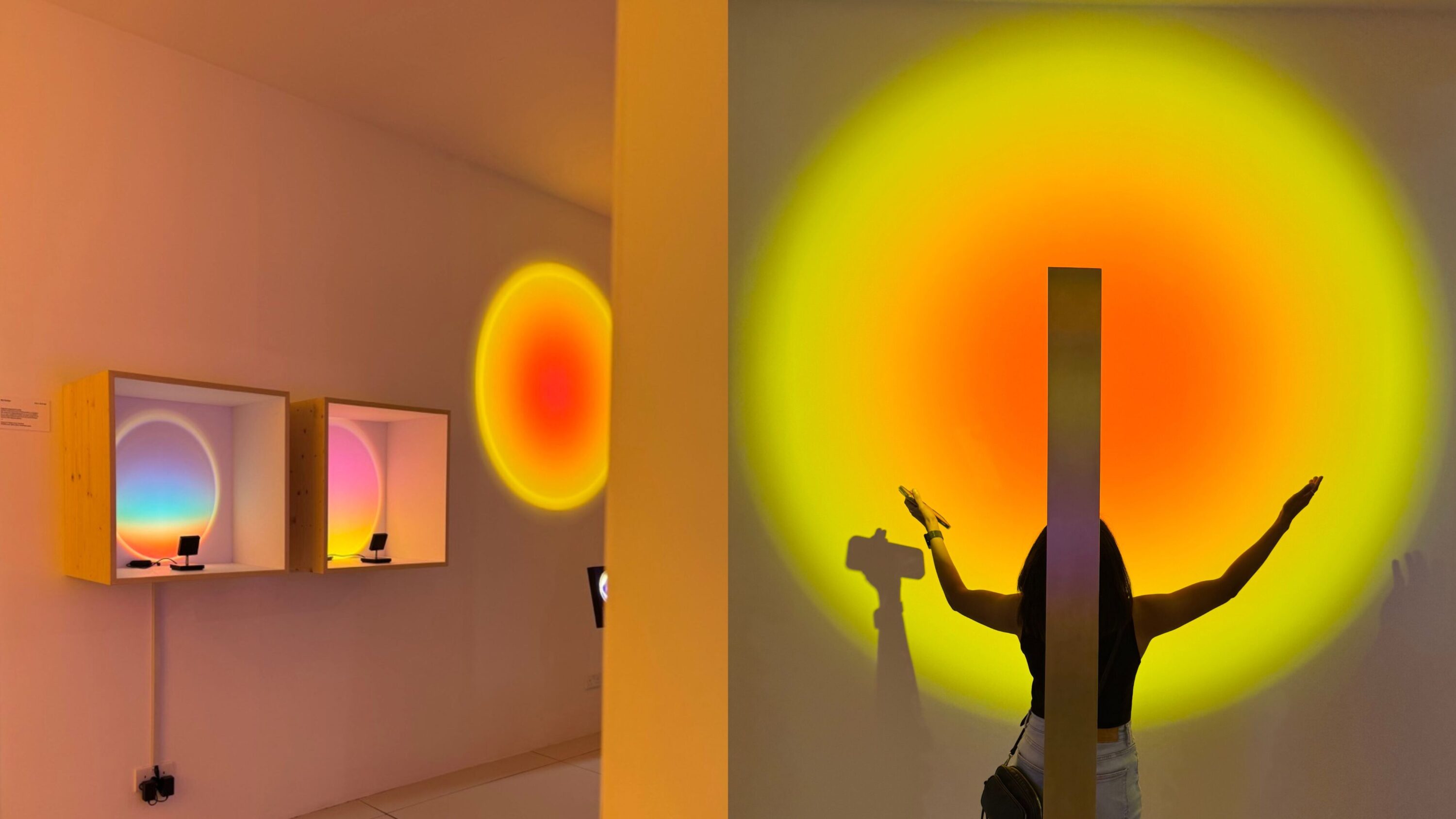A celebration of texture, light and interactivity
Dubai Design Week was an inspiring reminder of how creativity and design can transform public spaces into living experiences. Stephanie Hreiki, Senior Lighting Designer walks us through her experience.

This year’s edition felt particularly special, as many installations encouraged interaction and participation, blurring the line between viewer and environment.
People weren’t just observing design; they were inhabiting it. You could walk through, sit within, or simply pause and experience how art and lighting come together to shape emotion and community.
What stood out most was the human scale and accessibility of the work. These were not distant, untouchable exhibits; they were crafted to invite rest, play, reflection, and connection.
Whether through immersive light structures, tactile craftsmanship, or urban seating that redefined gathering, every piece celebrated design’s ability to bring people together.
Among the many highlights, a few installations truly captured the spirit of this year’s event:
The Fabric Pavilion
A softly illuminated tunnel of tensioned textile that guided visitors through a rhythmic play of shadow and light. Its walk-through design and gentle materiality encouraged calm movement and quiet conversation beneath its triangular canopy.
The Bamboo Canopy
A sculptural forest of woven bamboo forms branching from white trunks above vivid red benches. By day it offered shade; by night, warm uplighting animated the space into a lively social hub.

Weaving Heritage
A striking indoor showcase where a craftswoman demonstrated traditional carpet-weaving techniques. The rhythmic process and richly dyed threads highlighted the endurance of handmade design in a digital world.
Urban Cocoons
Playful swing-like seating pods arranged in a circular formation, glowing gently from within. These pastel structures invited relaxation and spontaneous conversation among strangers.

Chromatic Light Boxes
Minimal cubes projecting gradients of warm and cool tones that overlapped to form ethereal colour auras on the walls – a beautiful study of how light can evoke mood and perception.

Dubai Design Week continues to reinforce D3’s role as a cultural anchor for the region – a space where experimentation meets community, and where every installation becomes a dialogue between people, materials, and light.








